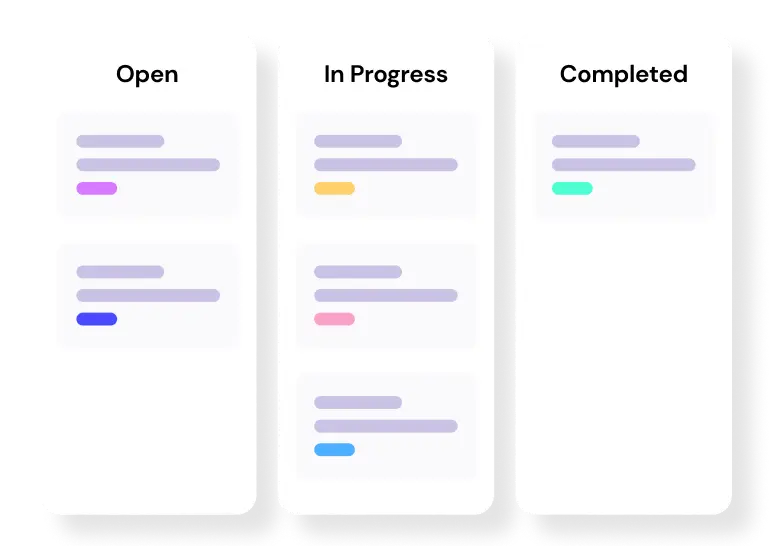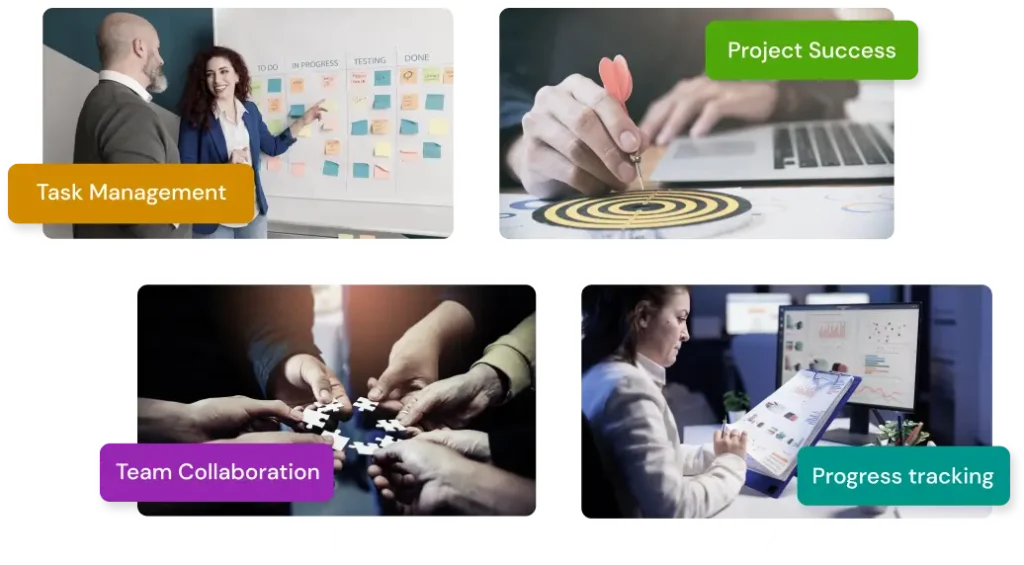
Project Goals and Objectives: What They Are, Key Similarities, Differences, and Why Both Matter
Many project managers set ambitious visions like “We’re Climbing Everest” to their team, then wonder why everyone’s scattered across different trails, exhausted, and nowhere near the top.
That’s because, before the climb begins, two questions need answers:
- Do we know what mountain we’re climbing? (Goals)
- Do we have a clear trail to follow? (Objectives)
Understanding the differences as well as similarities between project goals and objectives means being clear about the mountain to climb and the trail to follow, and this is what separates winning projects from the rest.
In this guide, we’ll break down these key differences and show you why both matter for your project’s success.
So let’s dive in!
What Are the Project Goals?
A project goal is a broad, long-term, achievable outcome that sets your overall direction and purpose. It answers the fundamental question: “What are we trying to achieve?”
A single project can have multiple project management goals, but each should be specific enough to guide your team toward what success looks like. For example:
- Increase brand awareness by 25% annually
- Improve blog traffic by 30% within six months
In simpler terms, we can say that project goals are your project’s guiding compass, directing all team efforts toward a unified vision of success.
For a deeper understanding, read our detailed guides on Project Goals
What Are the Project Objectives?
Project objectives are short-term, specific, and measurable actions that outline the path to achieving your broader goal. They focus on execution and answer the question: “How can we achieve the goal?”
Multiple objectives support every project goal by breaking down the bigger picture into smaller, manageable steps, each having its own timeline and target.
For example, if your goal is to improve blog traffic by 30% within six months:
- Publish 3 SEO blog posts weekly, targeting long-tail keywords
- Create 10 guest posts with backlinks by month 3
Ultimately, this approach provides a clear, structured plan that guides your project team’s efforts and progress throughout the project management phases.
Learn more in our complete breakdown of the Project objectives

Level up your WordPress project management game with this Trello equivalent solution – where limitless possibilities come at an unbeatable price!
Similarities Between Project Goals and Objectives
Project goals and objectives are fundamental to achieving successful project completion. They bridge high-level strategy with practical execution, ensuring the project contributes to broader organizational aims.
Both share several key similarities:
- Align with organizational strategy, linking the project to larger business goals
- Provide clear guidance and direction to the project team and stakeholders
- Serve as a framework for informed decision-making throughout the project
- Motivate the team by turning abstract ideas into tangible targets
- Facilitate effective communication with all project participants
- Establish criteria for measuring project success and progress
- Show a hierarchy, where specific objectives support broader goals
Together, goals and objectives form a solid foundation that drives focus, commitment, and meaningful results. Also, ensure that every effort contributes to a unified vision, ultimately leading to project success.
Project Goals Vs Objectives: The Key Differences
Project goals are “what” you want to achieve, while objectives outline “how” you’ll get there.
To make this distinction even clearer, let’s take a quick glance at their differences across key aspects-
| Aspect | Project Goals | Project Objectives |
| Scope | Broad, long-term outcomes that define what you want to achieve | Specific, measurable actions taken to reach the goal |
| Purpose | Provide vision and direction for the project team and organization | Break down the goal into actionable tasks and guide day-to-day activities |
| Time Frame | Long-term (months or years) | Short to mid-term (daily, weekly, or monthly) |
| Measurability | Less measurable; focused on big-picture results | Clearly measurable with KPIs or OKRs |
| Focus | Outcomes and impact | Actions and execution |
| Structure | General and strategic | Detailed, tactical, and task-oriented |
Why Project Goals and Objectives Both Matter for Success
Achieving project success starts with a clear understanding of where your business is going and how to get there. This is where goals and objectives work together as your strategic guide.
Without clearly defined goals and objectives, you’re essentially navigating without a map, leading to wasted resources, confused teams, and missed opportunities.
In fact, only 64% of projects meet their goals, while 36% fail due to a lack of structured goal-setting and objective-driven execution.
That’s why successful project managers rely on the SMART framework (Specific, Measurable, Achievable, Relevant, Time-bound) to create goals and objectives that actually drive results.
This integrated approach gives you:
- Clear direction and strategic focus for all project management activities
- Effective project planning and smart resource allocation
- Well-defined priorities that help you track meaningful progress
- Strong team motivation through alignment and shared purpose
- Performance evaluation through measurable outcomes and Key Project Management Indicators
- Accelerated growth by learning from each project milestone
- Enhanced financial returns and improved profitability
- Strengthened competitive advantage in your market position
When SMART goals and objectives work together, they create the foundation for measurable success. This means you can track what’s working and learn from each project to improve the next one.
Also Read: Why project management is important
Examples of Project Goals and Objectives
Goals and objectives work together but serve different purposes. Each goal, aligned with your company’s mission and achieved through multiple specific objectives.
Here are real-world examples showing how SMART goals and objectives work together:
Brand Positioning
Goal: Expand brand authority by launching a socially responsible product within the next quarter.
- Objective 1: Complete market research via surveys and focus groups in the first two weeks
- Objective 2: Finalize product design and pricing informed by research findings by month one
Objective 3: Partner with a local nonprofit and plan a joint launch campaign by week 10
Market Growth
Goal: Increase lead conversions from digital channels by 15% in 60 days.
- Objective 1: Launch a targeted lead magnet campaign across blog and social within week one
- Objective 2: Optimize sign-up forms for mobile by week two
- Objective 3: Run A/B tests on CTAs and messaging throughout the month
- Objective 4: Review performance weekly and refine tactics accordingly
Operational Efficiency
Goal: Reduce project delays by 30% by the end of Q3.
- Objective 1: Audit workflows to identify bottlenecks in the first two weeks
- Objective 2: Implement automation for approvals and reporting by month two
- Objective 3: Introduce weekly cross-department sync meetings
- Objective 4: Monitor turnaround metrics and iterate monthly
Customer Experience
Goal: Improve customer satisfaction scores by 20% over the next quarter.
- Objective 1: Launch follow-up surveys after each support interaction by the end of month one
- Objective 2: Roll out company-wide training on brand-aligned customer communication
- Objective 3: Introduce live-chat support to reduce first-response time
- Objective 4: Analyze satisfaction data monthly and adjust support practices

Tips to Align Project Goals and Objectives Effectively
Here are some proven tips to help you keep your goals and objectives perfectly aligned at every stage of your project:
- Set essential project goals early in the year to guide planning and anchor your roadmap from day one
- Clarify strategic objectives from the start that connect every project to the organization’s bigger vision
- Write goals and objectives using the SMART framework to ensure each one is Specific, Measurable, Achievable, Relevant, and Time-bound
- Break down each goal into clear, actionable objectives that act as a step-by-step project to-do list
- Involve stakeholders early and often to ensure the objectives are relevant, realistic, and supported
- Review goal–objective alignment regularly track it at every major project milestone
- Ensure KPIs are connected to both goals and objectives so your team can measure actual progress, not merely activity
- Make project goals visible to everyone to keep your team focused, aligned, and motivated
- Schedule regular reviews to update objectives as the project or strategy evolves
- Ensure each objective aligns with defined goals to maintain purpose and direction in effective project management
Here are some proven project management tips that you can follow
Set Clear Goals. Define Strong Objectives!
When it comes to project success, goals provide direction, and objectives outline the steps to get there. Without both, your team will keep wandering in circles, running around like headless chickens.
But when you get this right, everything changes. Your team knows exactly what they’re building toward and how to get there. Progress becomes visible, momentum builds, and those “impossible” projects suddenly feel achievable.
So before you kick off your next project, remember to set clear goals and define strong objectives, and you’ll turn scattered efforts into focused execution.
Thank you! Your next big win is waiting – go make it happen!
Let’s redefine project management with FluentBoards!
Get Tips, Tricks, & Updates
We won’t send you spam.









![how to create a project management workflow [x steps] (2)](https://fluentboards.com/wp-content/uploads/2025/11/How-to-create-a-project-management-workflow-x-steps-2-768x402.webp)





Leave a Reply